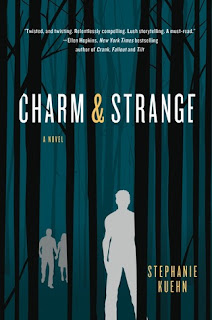Here’s what I’ve
been doing in March.
I’m Currently . . .
Reading: A
Madness So Discreet by Mindy McGinnis.
Watching: I’ve been trying to watch political
stuff so that I can be an informed American citizen, but it’s mostly just
stressing me out.
Stalking: You guys should check out Carole’s Random Life. Carole has the greatest book hauls ever, and she writes helpful
reviews, too.
Planning: Discussion posts for the next few
months. Coming up with topics that haven’t been discussed to death is difficult
for me. I don’t think the blogosphere needs any more posts about how much we
all hate insta-love.
Making: It recently took me 6 hours to make one blog post. The post
required a lot of research, and then I had to make graphics, which I suck at.
You’ll see the post next month, but you probably won’t be able to tell that it
took 6 hours. It doesn’t look like much. I loved doing the research, though.
The one good thing about spending my entire life in college is that I know how
to research like a boss. When I want to know something, nothing can stop me.
Stocking up on: Nothing, really. I have been putting all
of my classic horror books in one place. I’m hoping that seeing a big stack of
them will motivate me to read them. I guess I’m stocking up on classic horror
books, even though I already own them.
Wishing for: World peace.
Enjoying: Not going to the dentist. I spent way
too much time at the dentist in February. My teeth don’t hurt now, so I guess
it was worth it.
Trying: Not to freak out about all the stuff happening in the next
few months. I’m going to be doing some things that I’ve never done before, and
new responsibilities always make me feel squirrely.
Eating: Not very much because I’m trying to lose weight. I did eat
some ribs from the pig truck a few weeks ago. You gotta love food trucks.
Goal setting: Get better at commenting on blogs. I’ve
been really slacking on this lately. I also need to find some new blogs instead
of just sticking to my favorites. Spread the comment love.
Learning: That sometimes I need a break. I’m not a
robot. (Even though it might be cool to be a robot.)
What have you been doing in March?








































